![]()
Plant Dreams, Grow Gardens
Bell peppers Red, Yellow, and Orange – Theses three to four lobes versatile veggies, Is everyone’s favorite food. We enjoy them grilled, stuffed bell peppers! a delicious meal option, sauteed, and in soups or sauces.
This super vegetable is an excellent source of vitamin A, vitamin C, potassium, fiber, folate, iron, and is low in calories.
They are warm-season crops. Bell peppers are sweet, they do not contain chemical capsaicin/ lipophilic that causes a strong burning sensation when it comes in contact with mucous membrane, unlike their spicy brethren. So bell peppers are sweet to taste. I am sure you have seen bell peppers growing in the fields. But!
Unlock the potential of your garden with GreenhousePlanter – explore our PRODUCTS today!
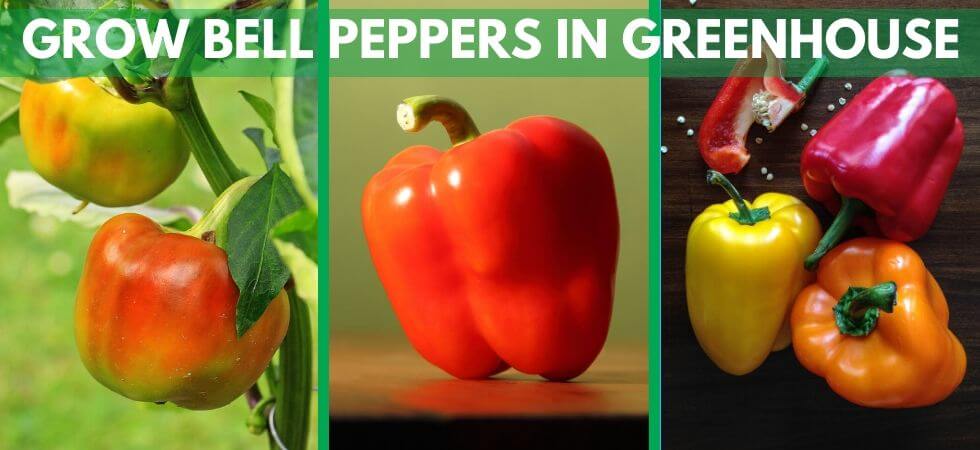
Can you grow bell peppers in your Greenhouse?
BELL PEPPERS LOVES YOUR GREENHOUSE!
Of course, You can easily grow bell peppers inside your greenhouse.
In this Greenhouse Bellpepper Guide, we will guide you, on how to plant, grow, and harvest bell peppers in your greenhouse.
Before getting into the details, We assume that you already own a greenhouse. In case, if you don’t own a greenhouse, we have a detailed and easy to follow article on “How to build a greenhouse” which will help you build your own DIY greenhouse.
Following requirements must be met, for Greenhouse Bell peppers!
Temperature is one of the most important factors for the proper growth of your greenhouse bell peppers and it also helps determining planting times. It is crucial to provide your bell pepper with the optimal temperature in the greenhouse.
Bell peppers production depends on the length of the growing season. It requires a very stable temperature ranges, with day time greenhouse temperature between 25 – 28°C and night time greenhouse temperature 16-18°C. This is the ideal temperature range for bell peppers to grow in the greenhouse.
Your greenhouse bell peppers will fail to grow at temperatures below 10°C – 12°C and if it exceeds 35°C.
The required temperature ranges per development stage for optimum greenhouse bell pepper production are.
| Greenhouse Bell Peppers Plant Development Stages | Minimum Temperature | Optimum Temperature | Maximum Temperature |
| Germination stage | 23°C | 26-28°C | 30°C |
Vegetative growth stage | 21°C | 23-25°C | 28°C |
Fruit set stage – night time | 15°C | 17-18°C | 20°C |
| Fruit set stage – day time | 20°C | 23-25°C | 28°C |
Greenhouse Bell peppers will undergo cold damage below 6°C, frost damage under 1°C and terminal damage below -2°C. Never let your greenhouse temperature below 6°C.
Greenhouse Bell peppers do well at a relative humidity between 65-85%. This range is considered optimal for the growth of peppers.

What happens to your Greenhouse Bell Peppers, if the relative humidity levels are high or low?
When humidity level rises above the required limits it negatively influences pollen release and its distribution on the stigma. Therefore, you will get less amount of bell peppers per plant.
On the other hand, When the humidity level is relatively low it causes pollen to dry out before germination on the stigma, as a result, there is no germination.
Hence, keep track of your Greenhouse humidity and provide the optimal humidity conditions for your greenhouse bell peppers. I would recommend using Gove Temperature and Humidity Monitor so you can keep track of your greenhouse humidity and temperature.
You might need to increase the humidity inside your Greenhouse when the humidity level is low. You can also follow this guide on “How to increase Greenhouse Humidity“.
Bell pepper prefers sandy to loam soil, provided the soil is well-drained to a depth of at least 600mm. They do not perform well in very high clay soils.
What are the criteria that need to be fulfilled in terms of the soil structure?
These factors are Nutrient composition, compaction, effective soil depth, pH (acidic), and water holding capacity.
The above-mentioned factors greatly influence the growth of any plant in the greenhouse.
The greenhouse soil where you are planning to grow bell peppers and other vegetable crops. Should permit adequate root growth, provide the plant with water, oxygen and micro and macro-nutrients.
Every factor has an important role in plant growth like the rate of root growth depends on the degree of compaction of the soil.
In the same way, the oxygen content of the soil increases the shoot and root growth of the plant. Pepper plants roots grow well if the soil has water holding capacity.
We cannot overlook the importance of the organic matter in the plant’s growth cycle from seed germination till fruit setting.
It is the plant’s source of nutrients and acts as a soil conditioner. Supply the greenhouse soil with organic matter in the form of compost, decayed leaves, sawdust or animal manure.
Organic matter also increases the capacity of the soil to hold retain water and nutrients. Not only this but it promotes root growth, infiltration of water and air into the soil.
I recommend you do ridging of pepper beds in the greenhouse before planting seeds. Why ridging? Ridging a bell pepper crop bed will keep excess water away from the plant, improve oxygenation of the root zone, will increase soil depth in the growing bed, to promote root development and keep root diseases at bay.
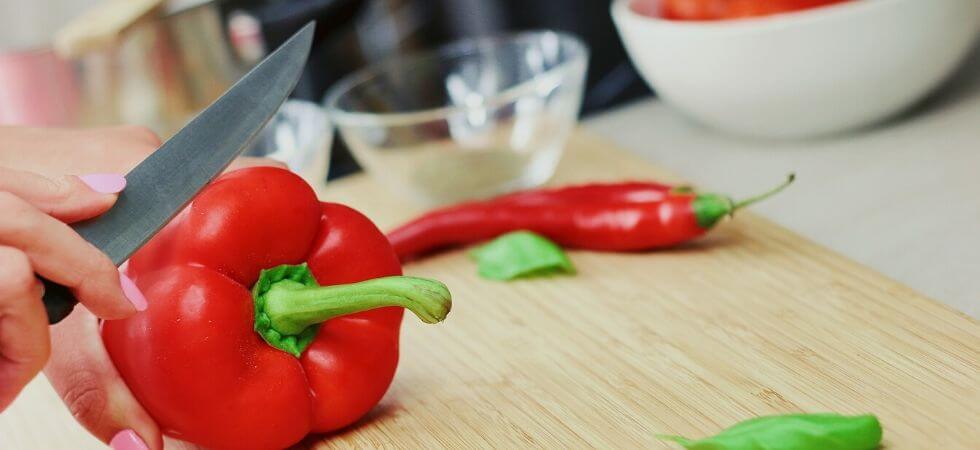
Weeds act as yield restricting factor in peppers production. They compete directly with the crop for nutrients and moisture in the soil.
Bell peppers are very sensitive to weed competition. So one way to control weeds would be by installing shutter ventilators Automatic-Shutter-Ventilator in the greenhouse. This will prevent weed seeds from getting into the greenhouse that are carried away by the wind.
The most effective way to prevent weed growth inside your Greenhouse Bell Peppers bed is installing ground cover fabric (Pro-Tec Weed Control Membrane Ground Cover MAT Landscape Fabric). This is one of my favorite way of weed control because I don’t have to worry about any weeds the whole season.
We hope that you are getting tons of information on Greenhouse Bell Peppers. We strongly recommend you subscribe to our email newsletter, So you don’t miss out on our upcoming informative articles.
For seeds establishment use model 128 or 200 seedling trays (Cell-1020-Flat-Seed-Starter) for better and more root development. Pepper seeds take 6 to 10 weeks to transplant maturity. Place them under seed starting grow lights YGROW-Upgraded-Exclusive-Greenhouse-Hydroponic.
You can also place them inside your greenhouse under the sun, but make sure that it’s warm inside your Greenhouse and your bell pepper seedlings get plenty of light.
The effects of soil and growth media temperature on Greenhouse bell Pepper seed germination.
The optimum soil and growth medium temperatures of 25-30°C will speed up the germination process and bell peppers will take 8 weeks to sprout.
It is recommended to grow the seedlings in a well-aerated medium, with good water holding capacity and a pH of 6.5.
For growth medium use bark, peat and vermiculite mixtures.
The correct amount of fertilizer is the most important factor in plant development. To ensure this we need to calculate the correct nutrient requirement, the following directions need to be taken into account:
The ideal soil for bell pepper production should have an ideal pH of 5.6 to 6.8, and
I would recommend using Botanicare Fertilizer because it contains all of the above-mentioned elements.
Besides using commercial fertilizer I would strongly recommend you add plenty of decayed organic compost in your Greenhouse Bell Pepper bed, along with the beneficial bacteria, which will greatly improve the quality of your soil.
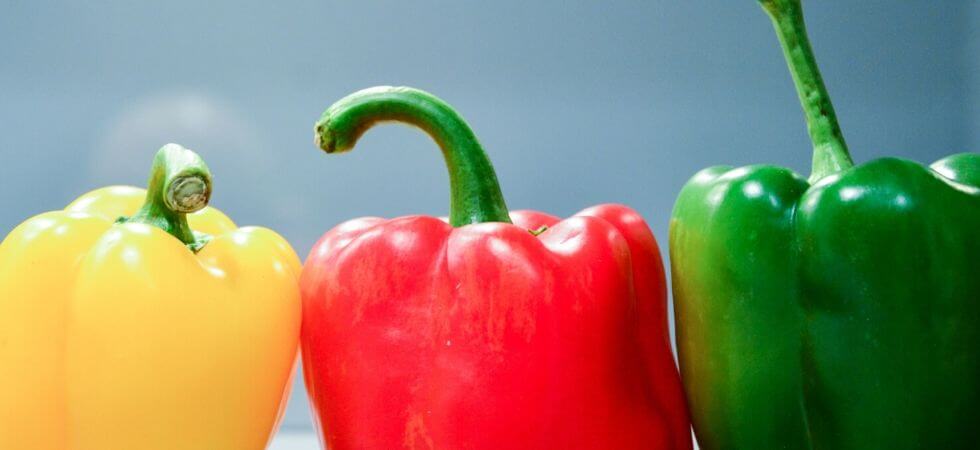
Providing adequate water to the roots of your Greenhouse Bell Peppers is critical. Too little or too much water has devastating effects on the crop.
Underwatering results in a decrease in photosynthesis, stunted growth, sub-optimal yields, no flowering, a low percentage of fruit set, smaller size fruits, fruit development stops, and flower abortion.
When we supply the plant with too much water as needed then there will be no oxygen in the soil, bell pepper will wilt, there will be a rise in root diseases and stunted plant development.
The growth of pepper is divided into four stages and watering is done accordingly. Let us see how?
Stage 1: Establishment
1. It can last up to 2 weeks.
2. Seedling establishment takes place and plants start to grow actively.
3. In the establishment, stage low amounts of water are used.
4. After seedling establishment to just before the first flower, it is highly recommended (although a fine line of management) to reduce water drastically. It will force the roots to grow aggressively deeper into the soil looking for moisture. This will help the plants at the fruit set stage to handle difficult and stress-related periods better due to the increased roots.
Stage 2: Vegetative growth
1. Development of first flowers and fruit.
2. Double the amount of water is used compared to the previous stage
Stage 3: Fruit set
1. Growth is at its highest.
2. Water usage at this stage is at its highest during the lifespan of the crop.
Stage 4: Ripening and harvesting
1. Very high loads carried on the plant.
2. In this stage of plant growth, water usage starts to decrease.
| Weeks after Plant | Root Depth (mm) | Soil Moisture % | Crop factor | Day between watering | Amount needed (mm) |
| 0 – 2 | 400 | 20 | 0.3 | 2 | 10 – 15 |
| 3 – 6 | 500 | 30 | 0.4 | 3 – 5 | 15 – 25 |
| 7 – 15 | 600 | 40 | 0.6 | 5 – 7 | 30 – 40 |
| 16 – + | 700 | 50 | 0.8 | 7 – 10 | 20 -30 |
Soil should be wet at planting. Water 20 – 30mm directly after planting.
Most of Greenhouse Gardeners, neglect pruning Greenhouse Bell peppers, but that’s ok. Because pruning takes time and our schedule is very busy so we drop off the task of pruning our Greenhouse bell peppers.
Bell peppers are pruned to encourage more growth vertically and to cut off all of the suckers that propagates from the main stem. Furthermore, pruning also improves the size and quality of the peppers.
But, You will have to fasten your plants vertically along with the wire support. Check out this YouTube video on Greenhouse Bell Peppers Pruning.
Checkout this video on Transplanting Greenhouse Bell peppers seedlings in to the raised Beds. Notice the black plastic cover on the beds for weed control.
Let us see in detail what causes peppers to suffer and how can we control these pests and diseases.
It is a pathogenic fungus that causes yellow, brown, purple, or black spots on pepper leaves. Dark spots on stems and fruits of bell pepper.
These spots develop into a gelatinous mass salmon pink in color which will cause the plant to rot.
The only prevention is the use of copper-based fungicides Bonide-811-Copper-Fungicide.
These insect pests consume all the sap from the leaves turning them yellow. They leave sticky homey dew over the plant surfaces on which ants come.
Prevention from aphids is simple to introduce beneficial insects in the greenhouse. Read more at https://greenhouseplanter.com/insects-that-are-actually-saviours-of-your-greenhouse-plants/.
Blossom-end rot is caused by nutrient deficiency lack of calcium. It causes dark, water-soaked spots on the blossom end of the fruit (the side opposite the stem). The fruits enlarge in size becomes sunken and rotted.
The prevention is maintaining proper soil pH, use mulch, regulate optimal soil temperature, and the supply of adequate amounts of fertilizers.
These beetles lay yellow-orange eggs in clusters on the underside of bell peppers leaf. Beetles larvae and adults chew holes in foliage. Introduce beneficial insects in the greenhouse to control these harmful insects.
They eat bell pepper leaves in a pattern it looks like they had been hit by a tiny shotgun. For prevention use mulch, attract beneficial insect predators by growing native plants that will attract these bugs.
It is a plant virus that causes stunted, mottled green, yellow or white pattern or ringed spots on bell pepper leaves and warts on fruits.
The only prevention is remove the infected plants, use certified virus-free seeds, make use of row covers in greenhouse bed, practice disinfecting greenhouse tools after each us. Most important keep greenhouse weed-free and aphid-free because they help in spreading the virus to other crops in greenhouse.
You can also check out our article “15 Basic Greenhouse pest control tips and tricks” for more info on Greenhouse pest control.
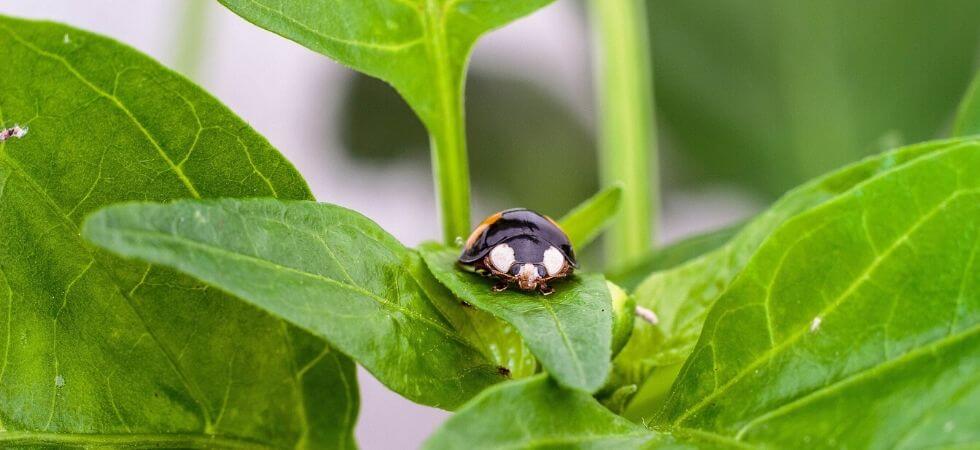
Most of the new Greenhouse Growers think that we can harvest peppers form a plant only for one season. But that’s not true. Check out this fellow, he is harvesting peppers from the plants that are 2 years old.
I hope that you got a ton of information from this article. If you want to return the favor, share this article with your friends, It will help us a lot.
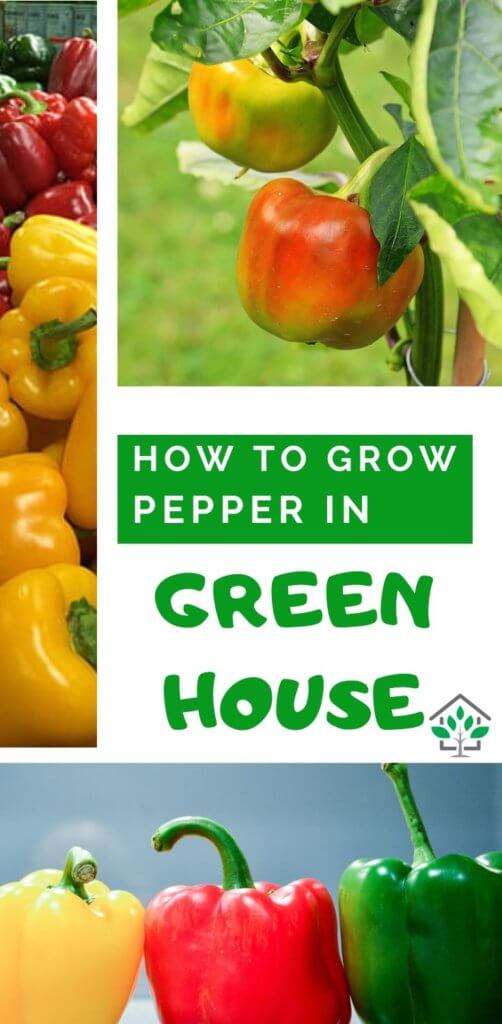
Comments are closed.
very beneficial peace of information.
Thank you so much for the informative article.
Thank you for appreciating 🙂
very beneficial peace of information. Nice and straight forward.
Thankyou 🙂
Thanks. It’s useful. ???